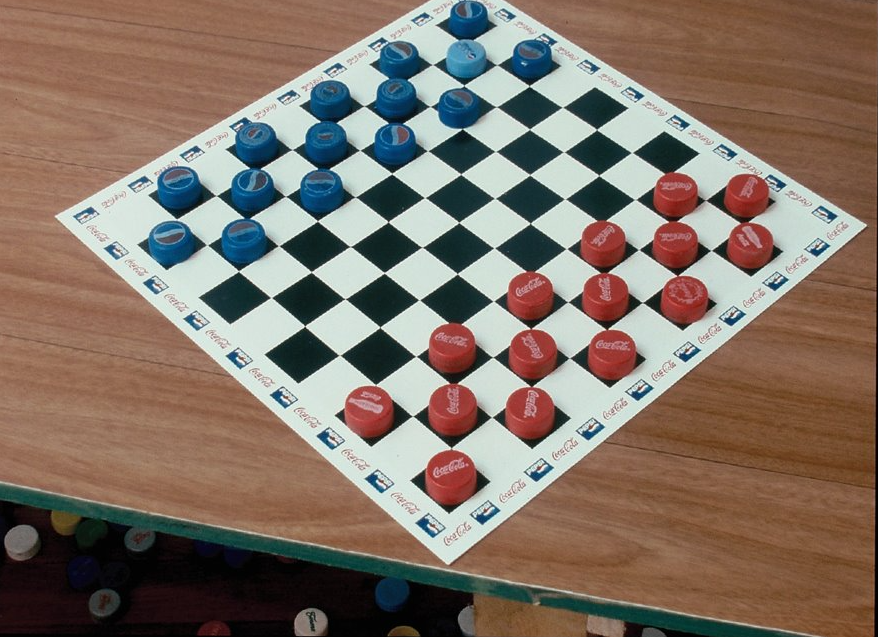Lapiz
Diego Bianchi
Alberto Sendrós Gallery (Buenos Aires). No. 224 – June 2006.

Diego Bianchi (1969) is a graphic designer. He studied with Pablo Siquier and received a scholarship from Guillermo Kuitca. His exhibition Imperialismo Minimalista (Minimalist Imperialism) is an example of a trend that manifests itself in the art of the “2000 generation”: installations with decomposing organic elements, smell, flies, and noise, and a type of art that is closer to the idea of generating aesthetic situations than to the artistic object as a cult fetish.
Bianchi selects resources from situationism, action art, Dada’s dishabituation and Pop’s colorful consumerism in a fragmentary way. To finance his exhibition, he sent the photo Time Sharing with a text urging people to buy it or return it. This exhibition reveals the dogmatic and almost militaristic way in which styles are imposed according to the imperialism of biennials and art fairs. Obedience to this authoritarian strategy of the globalized model begins when the spectator has to climb a ramp hanging from a rope to access the exhibition. The entrance to the exhibition space is difficult. Once the first physical dexterity is overcome, one arrives at the installation, which looks like an artificial garden with a saturated accumulation of very simple (minimalist) elements whose excess inverts, however, the historical concept of the term “minimal”.
The whole exhibition is a great and somewhat absurd battle between brands, logos and corporate seals. There is a glue war of national and foreign brands, placed according to the formation of an army where the German glue bars advance over the national ones, in a battle of victims and victimizers, like the bread that is being devoured by insects, or the absurd camouflage of banal elements, like a shovel and a broom. The apparent innocence of a board game is altered when the artist places Pepsi and Coca Cola soda caps on the boards. In this game of brands where one wins by eliminating the other from his own territory.
In the era of cultural industry, Bianchi reveals the marketing strategies of savage capitalism that is part of the art world today, in a trend that promotes the elimination of personal desire with the dubious illusion of eliminating existential anguish, all under the VIP protection of a cigarette brand.
BY LAURA BATKIS
